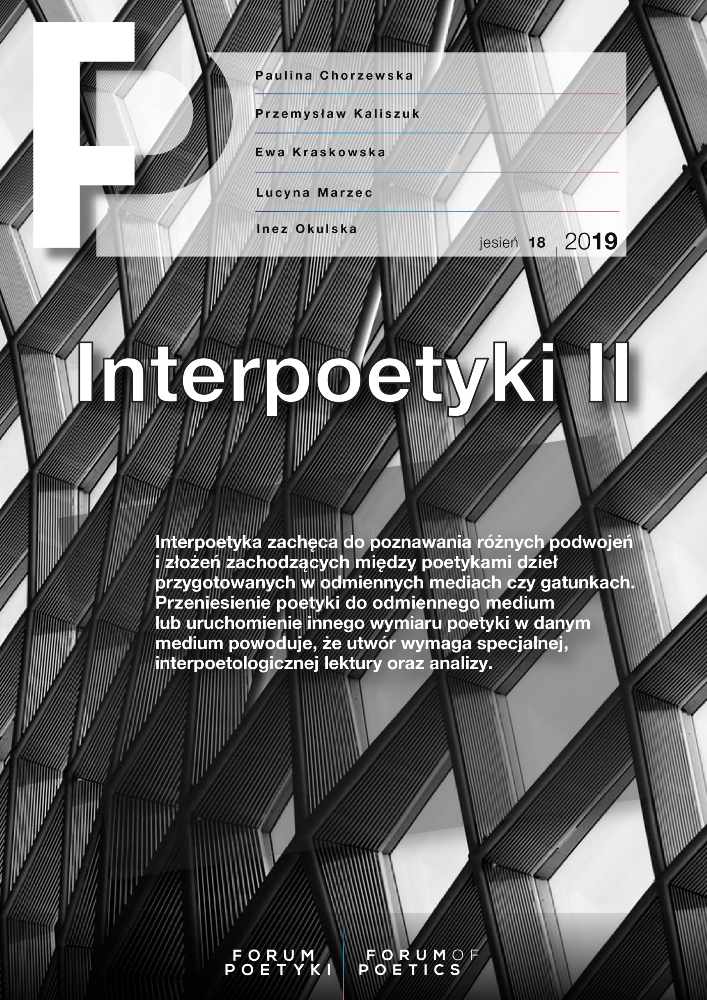Abstract
Is creativity only a human domain? Can a neural network, even the most sophisticated architecture, fed with material created and chosen by man, be creative, and even if it is not a work of art secondary to human beings? Or maybe, as Bakhtin, and behind him Kristeva, wanted, each of our expressions is still destined to be secondary, because this is the nature of language? What is creativity, what can artificial intelligence do, what critical literary reflections can its work induce, especially in the context of intertextual and interpoetic relations? In the article I am searching for answers on the example of functioning of neural networks type GAN and GPT-2 model. Apart from fragments of analyzed texts and references to the theory of literature, there is also an introduction to the structure and essence of the analyzed technological solutions
References
Bachtin, Michaił. Problemy literatury i estetyki. Przetłumaczone przez Wincenty Grajewski. Warszawa: Czytelnik, 1982.
Boden, Margaret A. The Creative Mind: Myths and Mechanisms. London: Routledge, 2004.
Drong, Leszek. „Od konwencjonalizmu do normatywizmu. Kilka uwag o ewolucji poglądów teoretyczno-literackich Stanleya Fisha”. W Er(r)go: Teoria – Literatura – Kultura, vol. 12, nr 1 (2006): 25–37.
Fish, Stanley. Interpretacja, retoryka, polityka. Redakcja i przedmowa Andrzej Szahaj. Wstęp Richard Rorty. Przetłumaczone przez Andrzej Szahaj. Kraków: Universitas, 2002.
Gandhi, Rohith. Generative Adversarial Networks – Explained, https://towardsdatascience.com/generative-adversarial-networks-explained-34472718707a, (dostęp: 8.05.2019).
Kajić, Ivana. AIternate endings: Lyrics completion using GPT-2, http://www.ivanakajic.me/blog/2019/03/31/aiternate-lyrics (dostęp: 15.07.2019).
Kazimierska, Agata. „Prawdziwe kłamstwa”. Tygodnik Powszechny. Artykuł online z 15.04.2019, https://www.tygodnikpowszechny.pl/prawdziweklamstwa-158508 (dostęp: 0.07.2019).
Łukaszewicz, Małgorzata. Pięć razy o przekładzie. Kraków: Karakter, 2017.
Mou, Lili i in. “How Transferable are neural networks in NLP applications”. Proceedings of the 2016 Conference on Empirical Methods in Natural Language Processing (EMNLP) (2016): 478–89.
“New AI fake text generator may be too dangerous to release, say creators”. The Guardian. Artykuł on-line z 14.02.2019, https://www.theguardian.com/technology/2019/feb14/elon-musk-backedai-writes-convincing-news-fiction (dostęp: 20.07.2019).
Pompescu, Marius i Radu Tudor Ionescu, Knowledge Transfer between Computer Vision and Text Mining, Bucharest: Springer, 2015.
Radford, Alec i in. Language Models are Unsupervised Multitask Learners. Raport techniczny, https://d4mucfpksywv.cloudfront.net/better-language-models/language-models.pdf (dostęp: 20.07.2019).
du Sautoy, Marcus. The creativity code. How AI is learning to write, paint and think. London: Fourth Estate, 2019.
License
Authors of articles are responsible for securing the rights to other publications (texts, tables, drawings and other illustrations) quoted or reproduced in their texts.

